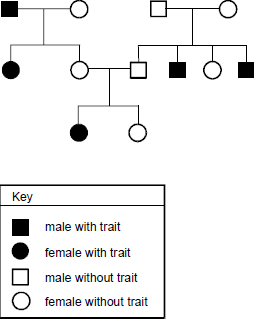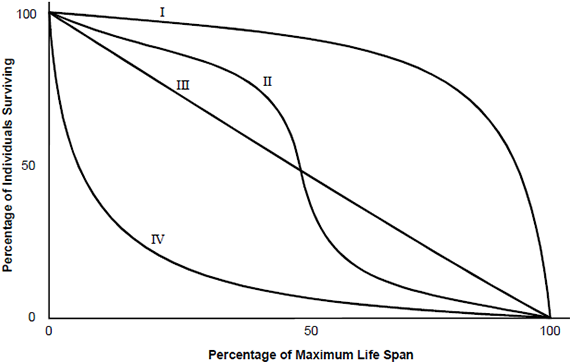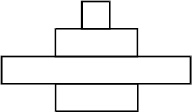Study Guide
Field 017: Biology
Sample Multiple-Choice Questions
Expand All Answers | Collapse All Answers
Subarea 1—FOUNDATIONS OF SCIENTIFIC INQUIRY
Use the information below to answer the two questions that follow.
For an experiment, students collect a bucket of water from a local marsh. The students fill five flasks with 500 mL of water from the bucket. One flask is sealed and set aside. Each of the other flasks is rapidly heated to 60°C using a Bunsen burner. Each flask is kept at this temperature for 1, 2, 5, or 10 minutes and then sealed and quickly cooled to 30°C using a tub filled with ice. The five flasks are allowed to stand at room temperature for five days. Students then examine a sample from each flask under a microscope and record the number of living organisms that are present. Using this information, the students calculate the total number of organisms in each flask.
Objective 002
Apply knowledge of methods and materials used in scientific investigations.
1. It would be most important for students to follow which of the following safety practices during this experiment?
- Place filled flasks in a secure location away from class activities.
- Wear latex gloves when collecting the water from the marsh.
- Use pipettes to fill the flasks rather than pouring water from the bucket.
- Wear safety glasses when heating and cooling the flasks.
- Enter to expand or collapse answer.Answer expanded
- Correct Response: D.
Objective 001
Understand the principles and procedures for conducting scientific research.
2. The dependent variable in this experiment is:
- the maximum temperature to which each flask was heated.
- the number of living organisms present in each flask.
- the length of time each flask was heated.
- the length of time the flasks stood at room temperature.
- Enter to expand or collapse answer.Answer expanded
- Correct Response: B.
Objective 003
Understand the nature and history of scientific thought and inquiry.
3. Rosalind Franklin, a British chemist, is best known for her work as an x-ray crystallographer. Her work is important to our understanding of:
- the double-helical structure of DNA.
- the shapes of the active sites of important enzymes.
- the structures and function of genes.
- regulation of the Lac operon.
- Enter to expand or collapse answer.Answer expanded
- Correct Response: A.
Subarea 2—CELLULAR FUNCTION
Objective 006
Understand cell theory and cellular structure and function.
4. Certain classes of antibiotics specifically interfere with bacterial ribosomes. This interference would effectively halt which of the following cellular processes?
- transcription
- photosynthesis
- DNA replication
- translation
- Enter to expand or collapse answer.Answer expanded
- Correct Response: D.
Objective 007
Understand the basic chemical components and reactions of cells.
5. Water's high specific heat has which of the following important implications for living organisms?
- It prevents the freezing of the cytosol of cells.
- It supplies the energy needed to drive metabolic processes.
- It maintains elevated body temperatures.
- It moderates environmental temperature fluctuations.
- Enter to expand or collapse answer.Answer expanded
- Correct Response: D.
Objective 009
Understand the processes of cell division, growth, and differentiation.
6. Which of the following best describes the process of cell differentiation?
- Specialized proteins found in the fertilized egg are segregated to different types of differentiated cells.
- Changes in enzymes in cells result in alterations of the metabolic rates.
- Cells on the surface of the blastula move inward and form specialized sheets of cells that make up the three embryonic germ layers.
- Changes in gene expression result in the synthesis of specific proteins found in specialized cells.
- Enter to expand or collapse answer.Answer expanded
- Correct Response: D.
Subarea 3—HEREDITY AND EVOLUTIONARY CHANGES
Objective 010
Understand the concepts and principles of Mendelian genetics.
7. Use the information below to answer the question that follows.
There is a pedigree diagram for a particular genetic trait over three generations. The key provides symbols for a male with the trait, a female with the trait, a male without the trait, and a female without the trait. In the first generation, a male with the trait crosses with a female without the trait. This pair, on the left, produces 2 offspring, a female with the trait and a female without the trait. Also in the first generation, a male without the trait crosses with a female without the trait. This pair, on the right, produces 4 offspring, a male without the trait, a male with the trait, a female without the trait, and a male with the trait. In the second generation, the female without the trait from the pair on the left crosses with the male without the trait from the pair on the right. They produce 2 offspring, a female with the trait and a female without the trait.
The diagram above shows a pedigree of a family for a particular trait. Based on the pedigree, the trait is best characterized as:
- sex-linked dominant.
- autosomal dominant.
- sex-linked recessive.
- autosomal recessive.
- Enter to expand or collapse answer.Answer expanded
- Correct Response: D.
Objective 011
Understand the concepts and principles of molecular genetics.
8. A single nucleotide insertion or deletion that occurs in a prokaryotic gene will most likely have which of the following effects?
- It will shift the reading frame and likely result in a nonfunctional polypeptide.
- It will prematurely halt transcription at that point.
- It will result in the substitution of a different amino acid for the normal one only at that location.
- It will have minimal effects on the resulting polypeptide due to redundancy of the genetic code.
- Enter to expand or collapse answer.Answer expanded
- Correct Response: A.
Objective 012
Understand the techniques and applications of modern genetics.
9. In modern genetic research and engineering, restriction enzymes are used to:
- cut DNA strands at specific nucleotide sequences.
- prevent foreign DNA from contaminating experimental samples.
- make multiple copies of DNA molecules.
- purify DNA from other cellular components and molecules.
- Enter to expand or collapse answer.Answer expanded
- Correct Response: A.
Objective 015
Understand characteristics of ancient life and related evidence.
10. Atmospheric oxygen began accumulating about 2.7 billion years ago with the appearance of photosynthetic cyanobacteria. The accumulation of atmospheric oxygen was gradual from about 2.7 to 2.2 billion years ago, then shot up rapidly to more than 10% of current levels. This rapid rise in atmospheric oxygen was most likely due to:
- the evolution of eukaryotic algae containing chloroplasts.
- the development of an ozone layer that allowed the evolution of plants.
- the saturation of the oceans with gaseous oxygen.
- the rapid multiplication of cyanobacteria in shallow seas.
- Enter to expand or collapse answer.Answer expanded
- Correct Response: A.
Subarea 4—ORGANIZATION OF LIVING THINGS
Objective 016
Understand the characteristics of living organisms and how organisms are classified.
11. Crocodiles and lizards share many more morphological similarities than either group shares with birds. However, phylogenetic trees based on genetic and other evidence show that crocodiles are more closely related to birds than they are to lizards. Which of the following is the most likely explanation for this apparent contradiction?
- Since diverging from a common ancestor, the lineage leading to birds has experienced more evolutionary change than that of crocodiles.
- Crocodiles and lizards have evolved similar morphological traits independently.
- Differences between crocodiles and birds are due to changes in a small number of genes that control the timing of growth and development.
- The lineage leading to birds appeared much later in time than that of crocodiles and lizards.
- Enter to expand or collapse answer.Answer expanded
- Correct Response: A.
Objective 018
Understand the structures, organization, and functions of systems in organisms.
12. Compared to the endoskeleton of vertebrates, the exoskeleton of arthropods has which of the following disadvantages?
- The exoskeleton contains chitin, which is weaker for its weight than bone.
- Muscles must be attached to the interior of the exoskeleton, which reduces their mechanical advantage.
- The exoskeleton must be shed as the organism grows, which leaves the organism unprotected for a time.
- The exoskeleton is relatively rigid, which restricts the movement capabilities of the organism.
- Enter to expand or collapse answer.Answer expanded
- Correct Response: C.
Objective 019
Analyze processes used by organisms to obtain, store, and use matter and energy and to maintain homeostasis.
13. Which of the following best explains how plants store surplus glucose for future use?
- Glucose is stored directly in the intercellular spaces of specialized organs of the roots and stems.
- Glucose is converted into starch, which is stored as granules within plastids.
- Glucose is converted into glycogen, which is stored in dense clusters within the cell mitochondria.
- Glucose is converted into cellulose, which is stored within the cell walls of the cells of the stem and leaves.
- Enter to expand or collapse answer.Answer expanded
- Correct Response: B.
Objective 020
Understand human anatomy and physiology.
14. Which of the following best summarizes how the nervous system senses the need to increase the rate and depth of breathing when a person begins to exercise vigorously?
- Sensors in the medulla, carotid arteries, and aorta respond to decreased pH of the blood, which results from increased CO2 levels.
- Sensors in the arteries respond to increased blood pressure, which is brought about by increased heart rate associated with exercise.
- Sensors in the muscles respond to increased lactic acid, which is produced as a by-product of fermentation.
- Sensors in the cerebral cortex respond to decreased O2 levels in the blood, which is brought about by increased oxygen use in muscles.
- Enter to expand or collapse answer.Answer expanded
- Correct Response: A.
Subarea 5—ECOLOGICAL SYSTEMS
Objective 022
Understand the characteristics of populations and communities.
15. In which of the following cases is the size of a population limited by a density-independent factor?
- More predators move into an area as the number of mice in the area increases.
- A late spring windstorm destroys many nests containing the eggs or new hatchlings of a bird species.
- Young pine seedlings have difficulty growing in the shade cast by the canopy of the mature pines.
- Each female squirrel in a population has fewer young following a winter of intense competition for food.
- Enter to expand or collapse answer.Answer expanded
- Correct Response: B.
Objective 023
Understand factors that influence human population growth and diversity.
16. Use the information below to answer the question that follows.
There is a line graph with four data curves. The horizontal axis is labeled "Percentage of Maximum Life Span," with values marked at 0, 50, and 100. The vertical axis is labeled "Percentage of Individuals Surviving," with values marked at 0, 50, and 100. All four curves begin at the data value of 0, 100 and end at the data value of 100, 0. Curve 1 descends gradually to about 90, 75, then steeply to 100, 0. Curve 3 descends in a straight line from 0, 100 to 100, 0. Curve 2 forms a shallow S, descending gradually between curve 1 and curve 3, passing more steeply through curve 3 at 50, 50, then gradually again to 100, 0. Curve 4 descends sharply to about 15, 25, then gradually to 100, 0.
Which of the survivorship curves displayed on the graph above is characteristic of humans in modern industrialized countries?
- 1
- 2
- 3
- 4
- Enter to expand or collapse answer.Answer expanded
- Correct Response: A.
Objective 024
Analyze the transfer of energy in ecosystems.
17. Use the information below to answer the question that follows.
There is a diagram of 4 unlabeled horizontal rectangles stacked on top of each other. They are centered with respect to each other and are of equal height. If each rectangle is 1 unit high, the one on the bottom is 3 units wide. The one above that is 7 units wide. The next one up is 3 units wide. The one on top is 1 unit wide.
The diagram above shows a biomass pyramid for a type of ecosystem. Based on the shape of its biomass pyramid, this ecosystem is most likely to have which of the following characteristics?
- The producers reproduce, grow, and are consumed very rapidly.
- Energy transfer between trophic levels is highly efficient.
- A single producer can sustain many primary consumers.
- Decomposers feed directly on the ecosystem's producers.
- Enter to expand or collapse answer.Answer expanded
- Correct Response: A.
Objective 027
Understand resource use and management by humans.
18. It will take the longest time for the hydrologic cycle to replace water that has been used in which of the following ways?
- A city withdraws water from a reservoir to supply homes and businesses.
- A cloud-seeding airplane causes rain to fall over an agricultural area.
- Farmers pump water from an underground aquifer to irrigate their fields.
- Village residents catch rainwater in basins and use it for washing.
- Enter to expand or collapse answer.Answer expanded
- Correct Response: C.
Multiple-Subarea Passage
Use the information below to answer the two questions that follow.
Smallpox was one of the world's most dreaded plagues until 1977, when it was declared eradicated through the efforts of the World Health Organization. Smallpox is an acute disease characterized by high fever and the appearance of lesions, especially on the face, that often leave deep scars. An effective smallpox vaccine was first employed in 1796 by Edward Jenner, a surgeon who had noticed that persons who had been infected by cowpox seldom became infected with smallpox. Jenner used material from a cowpox lesion on the finger of a young dairymaid to inoculate an eight-year-old boy. Eight weeks later he inoculated him with material obtained from a smallpox lesion. When the boy remained healthy, Jenner concluded that the cowpox inoculation had protected him against smallpox infection.
Objective 021
Understand characteristics of human diseases and immunology.
19. Vaccines act to protect individuals against smallpox and many other diseases by:
- inhibiting the action of enzymes used by the pathogen in performing its metabolic processes.
- sensitizing the immune system by stimulating production of antibodies that recognize antigens present on the pathogen.
- mimicking the toxins produced by a pathogen in order to provoke a systemic inflammation response.
- increasing the production of macrophages that circulate in the blood stream and destroy pathogens by phagocytosis.
- Enter to expand or collapse answer.Answer expanded
- Correct Response: B.
Objective 004
Understand the relationship of biology to contemporary, historical, technological, and societal issues.
20. Which of the following aspects of eighteenth-century medicine is best demonstrated by Jenner's experiment?
- Specialized disciplines within the field of medicine had not yet appeared.
- Scientific methods involving the formation and testing of medical hypotheses had not yet been developed.
- The existence of infectious agents such as bacteria and viruses had not yet been demonstrated.
- Standardized ethical and legal guidelines for medical experiments had not yet been widely adapted.
- Enter to expand or collapse answer.Answer expanded
- Correct Response: D.


